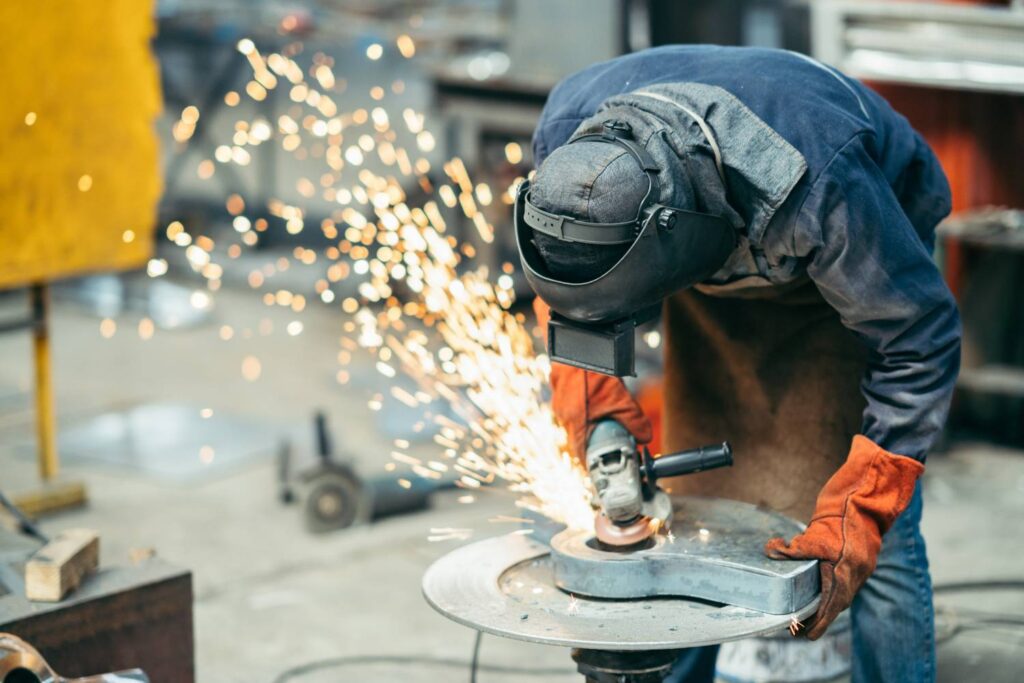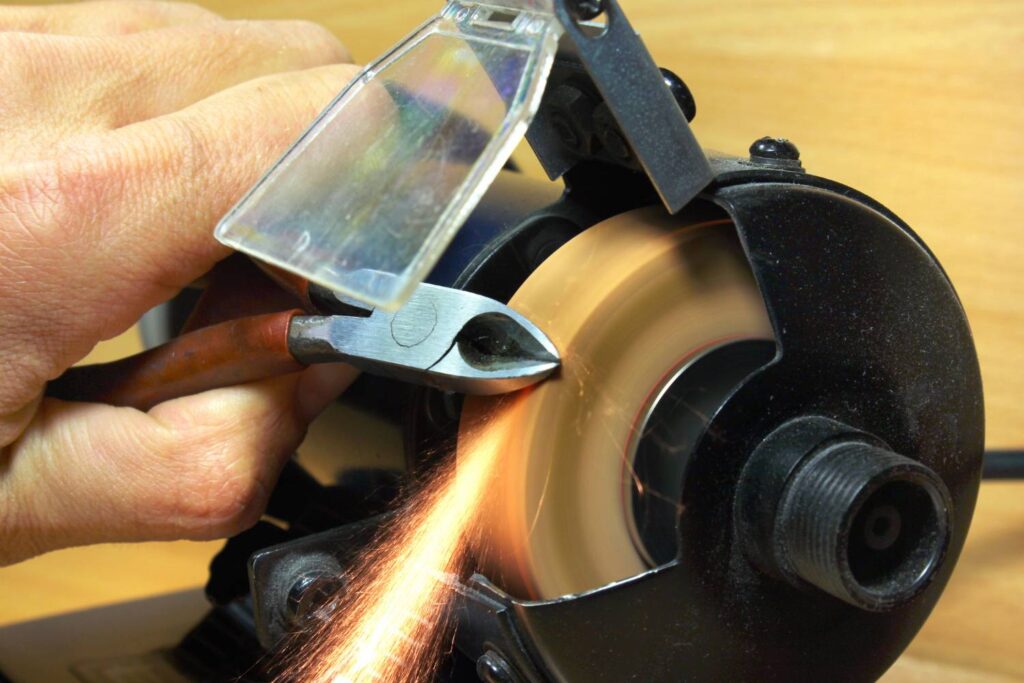Metal finishing is an essential aspect of manufacturing and engineering, serving as the final step in producing metal components. This process enhances metal products’ appearance, durability, and functionality, making it critical in the aerospace and consumer electronics industries.
In this blog, we’ll explore the different techniques involved in metal finishing, their applications, and how they contribute to the quality and longevity of metal products.
Let’s get straight to the point
Metal finishing is a crucial final step in manufacturing that enhances the appearance, durability, and functionality of metal products across various industries, including aerospace, automotive, and electronics.
Techniques like electroplating, anodising, powder coating, and polishing protect metals from corrosion, improve their aesthetics, and prepare them for specific uses.
The right finishing process depends on the material, desired outcome, and cost considerations. While traditional methods can have environmental impacts, the industry is evolving towards more sustainable practices.

Metal Finishing Essentials
Metal finishing refers to a broad category of processes used to alter the surface of metal products.
These processes include electroplating, anodising, powder coating, polishing, and blasting. The primary purpose of metal finishing is to improve the metal’s resistance to corrosion, enhance its aesthetic appeal, and prepare it for specific uses.
Without these finishing touches, metal components are more susceptible to environmental damage and wear, leading to shorter lifespans and poorer performance.
Why is Metal Finishing Important?
Metal finishing is crucial in extending the life of metal products by providing a protective layer that shields the metal from various environmental factors.
This process is particularly important in aerospace, automotive, and electronics industries, where components must perform reliably under extreme conditions.
Metal finishing also enhances the appearance of metal products, making them more attractive and marketable.
What Are the Key Techniques in Metal Finishing?
Electroplating
Electroplating is one of the most common metal finishing techniques. It involves coating a metal object with a thin layer of another metal, such as zinc, nickel, or chromium.
This is done by passing an electric current through an electrolyte solution, causing the metal ions to deposit onto the object’s surface. The benefits of electroplating include improved corrosion resistance, wear resistance, and an enhanced aesthetic appeal.
This process is widely used in the automotive industry to give car parts a shiny, durable finish and in electronics to improve the conductivity of components.
Anodising
Anodising is an electrochemical process that primarily benefits metals like aluminium. This process thickens the natural oxide layer on the metal’s surface, improving its corrosion resistance and allowing for the addition of colours through dyeing.
Anodising is particularly valued in industries where the appearance and durability of aluminium components are crucial, such as in the production of architectural elements, automotive parts, and consumer electronics.
Powder Coating
Powder coating is a dry finishing process that involves applying a fine powder, usually a thermoplastic or thermosetting polymer, to a metal surface.
The coated metal is then heated, causing the powder to melt and form a hard, protective layer. Powder coating is known for its durability, offering a finish that is more resistant to scratching, chipping, and fading than traditional paint.
It is commonly used in the automotive industry for parts like wheels and frames, as well as in household appliances and outdoor furniture.
Polishing and Buffing
Polishing and buffing are mechanical processes that smooth and refine the surface of metal components. Polishing typically involves using abrasives to remove surface imperfections, while buffing produces a high-gloss finish.
These processes are crucial for improving the appearance of metal parts and preparing them for further treatments. Polished metals are often used in high-end applications, such as jewellery, automotive trim, and luxury electronics.
Blasting
Blasting techniques like sandblasting and shot blasting clean, etch, or texture metal surfaces. These methods involve propelling abrasive materials at high speeds against the metal surface, effectively removing contaminants and preparing the surface for coating or painting.
Blasting is widely used in industries where surface preparation is critical, such as automotive parts, construction materials, and heavy machinery fabrication.
How Do You Choose the Right Metal Finishing Process?
Selecting the appropriate metal finishing process is vital for ensuring that the final product meets the required durability, appearance, and performance standards. The choice of process depends on several factors, including:
- Material Properties: The type of finished metal plays a significant role in determining the best finishing process. For example, stainless steel might require passivation to enhance its corrosion resistance, while aluminium is typically anodised for protection and aesthetics.
- Desired Outcome: The intended use of the finished product will influence the choice of finishing process. If corrosion resistance is a priority, electroplating or anodising might be the best options. Polishing or powder coating may be more suitable for components where appearance is key.
- Production Speed and Cost: The time available for finishing and the project’s budget constraints are also important considerations. Some finishing processes, like electroplating, can be time-consuming and expensive, but they offer superior results. Others, like powder coating, may be quicker and more cost-effective but might provide a different level of durability.

In Which Industries Is Metal Finishing Applied?
Aerospace and Automotive
Metal finishing is essential for ensuring the safety and reliability of critical components in the aerospace and automotive industries. These industries’ parts are often exposed to extreme conditions, such as high temperatures, pressure, and corrosive environments.
Metal finishing processes like anodising, electroplating, and powder coating help protect these parts, improving their resistance to wear and corrosion and extending their service life.
Medical Devices
Metal finishing is also crucial in the production of medical devices, where hygiene and precision are paramount. Electropolishing, for instance, creates smooth, clean surfaces on surgical instruments and implants, reducing the risk of bacterial contamination and making the devices easier to sterilise.
The high level of finish achieved through electropolishing also improves the biocompatibility of medical implants, enhancing their safety and effectiveness.
Consumer Electronics
In the consumer electronics world, products’ appearance and durability are key selling points. Metal finishing techniques such as polishing, anodising, and powder coating create the sleek, modern look consumers expect from smartphones, laptops, and tablets.
These finishes not only enhance the visual appeal of the products but also protect them from scratches, fingerprints, and other types of wear.
Architecture and Interior Design
Metal finishing also plays a significant role in architecture and interior design.
Finishes like anodised aluminium are popular in these fields for their durability, corrosion resistance, and aesthetic versatility. Architects and designers use these finishes to create visually striking and long-lasting building facades, fixtures, and fittings.
In addition, the ability to dye anodised aluminium in various colours allows for a wide range of design possibilities, making it a favourite material in modern architecture.
What Environmental Considerations Should Be Taken when Finishing Metal?
While metal finishing provides many benefits, it can also have environmental impacts.
Traditional finishing processes often involve chemicals that can be harmful if not properly managed. However, the industry is moving towards more eco-friendly practices.
For example, powder coating is more sustainable than traditional liquid paints because it produces less waste and does not release volatile organic compounds (VOCs) into the atmosphere.
Similarly, advancements in green electroplating techniques aim to reduce the environmental footprint of this widely used process.
Conclusion
Metal finishing is an important part of the manufacturing process, transforming raw metal components into high-quality, durable products that meet the demands of modern industries.
Whether through electroplating, anodising, powder coating, or another technique, metal finishing enhances metal products’ functionality, appearance, and longevity.
As the industry continues to innovate, we can expect even more advanced and sustainable finishing techniques to emerge, further enhancing the quality and performance of the products we rely on daily.

